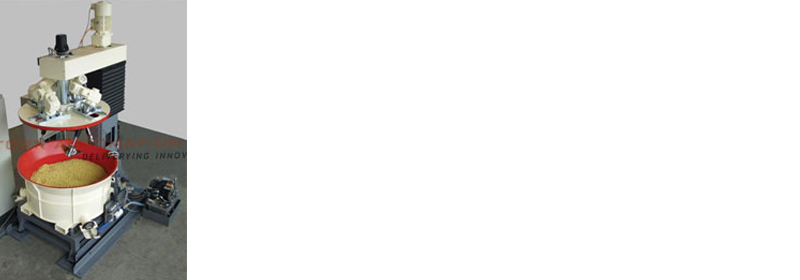
Home / Drag Finishing Machines

Drag Finishing Machine
Compared with conventional mass finishing systems where the parts are free-floating in the media, in drag finishing systems, the parts-being individually attached to the worktations-can never touch during the finishing process. This prevents part-on-part contact and, therefore, desired dentless finish can beachieved eaisly.
DRAG finishing is all about pressure and speed. The higher the pressure exerted by the media on the parts, and the faster the media “rubs” on the parts, the faster the desired finishing results can be achieved. In this respect, drag finishing is standing out above other finishing methods: Because of the high speed at which the parts are dragged through the media and the high pressure generated, drag finishing works 40 times faster compared with vibratory systems and about 4 to 5 times faster than high energy systems. Frequently, because of its high speed and high pressure, drag finishing is the optimum mass finishing method to produce a satisfactory finish. This is especially true for parts made from hard-to-machine, “tough” metals like high-alloy steel (stainless, titanium, Inconel, and so on), tool steel or parts with a high surface hardness.
The outstanding characteristic of drag finishing is that the parts are individually mounted onto the workstations of the carousel. Depending on the machine size, the carousel is usually equipped with four to 12 workstations. Each workstation may be loaded with one or multiple parts.
Compared with conventional mass finishing systems where the parts are free-floating in the media, in drag finishing systems, the parts—being individually attached to the workstations—can never touch during the finishing process. This prevents part-on-part contact and, therefore, desired dentless finish can be achieved eaisly.
To individually mount the parts to the workstations requires special parts fixtures. Frequently, the design of these parts fixtures poses an engineering challenge.
